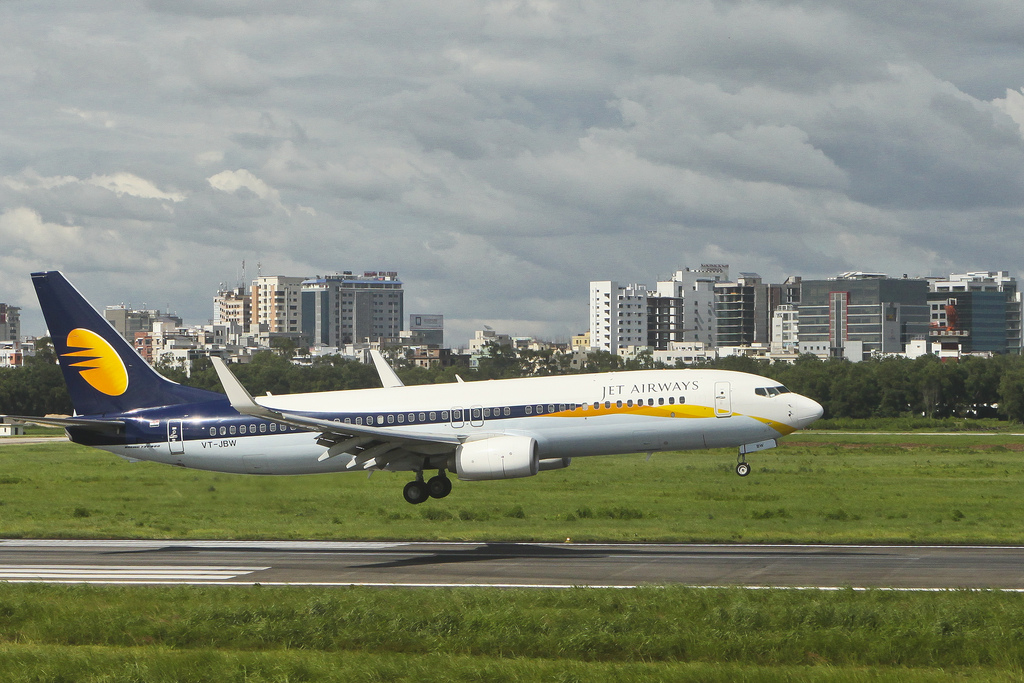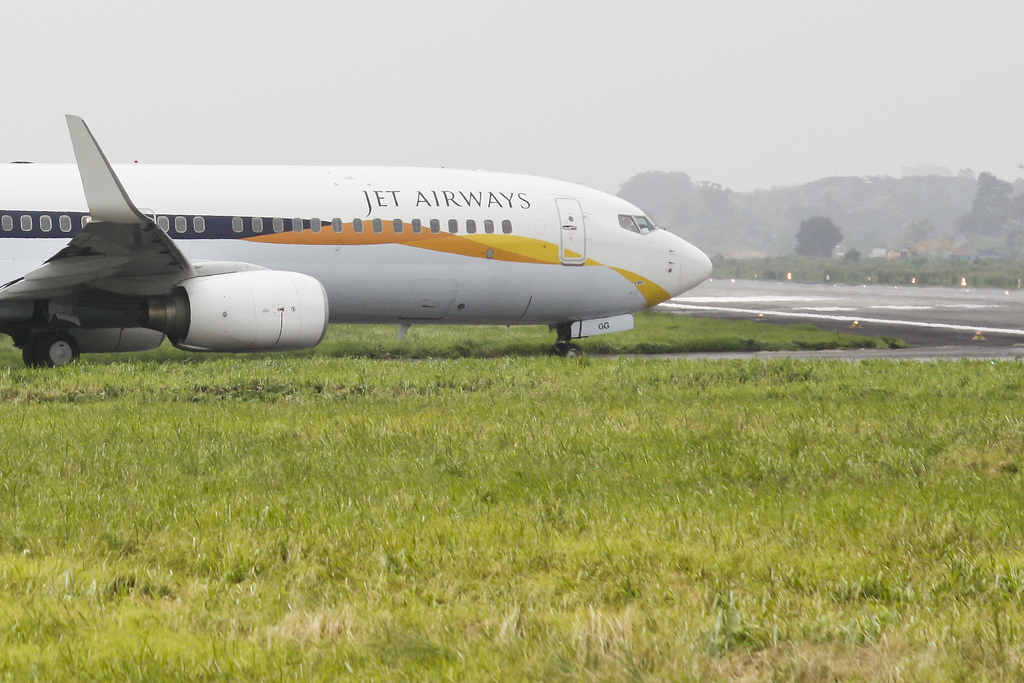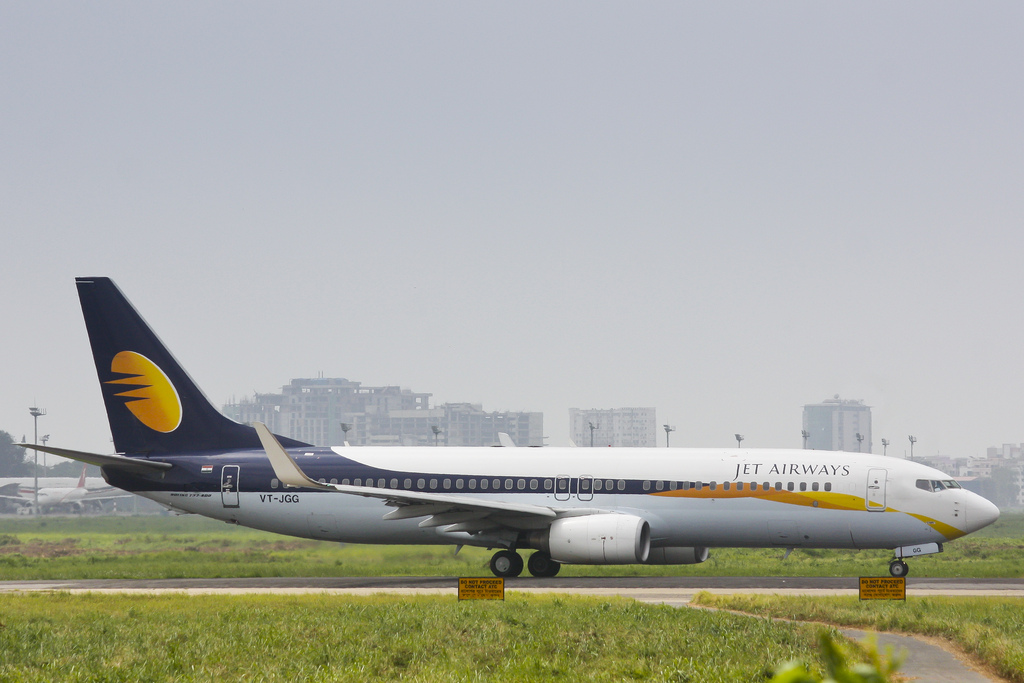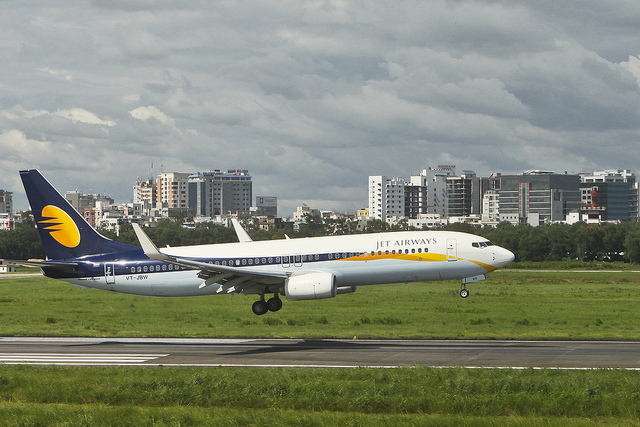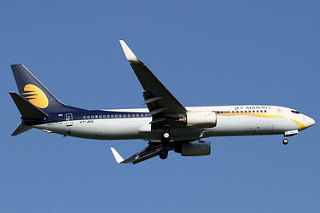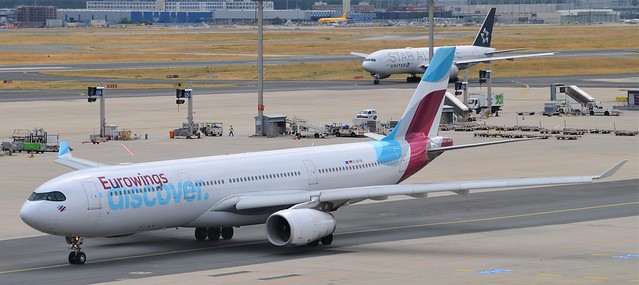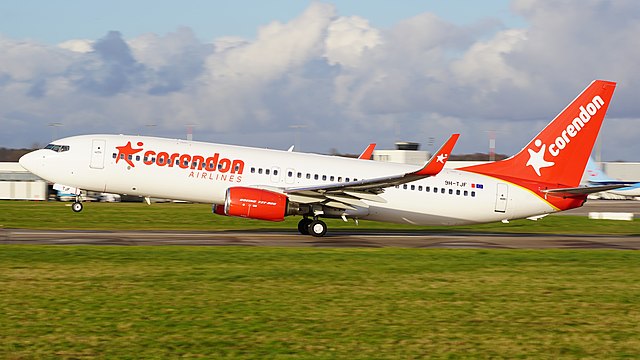Jet Airways B738 enroute on May 7th 2015, captain incapacitated
Last Update: May 26, 2017 / 15:07:09 GMT/Zulu time
Incident Facts
Date of incident
May 7, 2015
Classification
Incident
Cause
Captain incapacitated
Airline
Jet Airways
Flight number
9W-63
Departure
Bangkok, Thailand
Destination
New Delhi, India
Aircraft Registration
VT-JGG
Aircraft Type
Boeing 737-800
ICAO Type Designator
B738
The airline reported that during the later stages of the flight, the aircraft was in the Lucknow area (India) about 230nm short of New Delhi, the captain became ill and was unable to continue duties. The first officer followed company standard operating procedures, assumed role as commander of the aircraft, declared emergency and requested medical assistance to be ready at the runway in Delhi. The captain was taken to the cabin, where a doctor on board of the aircraft provided medical assistance. Another company captain travelling as passenger on board of the aircraft assisted the first officer for the descent, approach and landing. The aircraft landed about 40 minutes ahead of schedule, the ill captain was taken to a hospital.
On May 26th 2017 India's DGCA released their final report concluding the probable cause of the serious incident was:
The incident was caused by the sudden incapacitation of the PIC, during flight due to syncope precipitated by a bout of Gastroenteritis. There were no indications in follow-up tests to suggest that the syncope could have been anticipated.
The DGCA identified the aircraft involved as VT-JFA, however, according to radar data VT-JFA was conducting flight 9W-512 from Lucknow (India) to Abu Dhabi (United Arab Emirates) at the time of the occurrence flight while VT-JGG departed Bangkok at 14:03Z and landed in Delhi at 18:09Z. In addition the final report uses a number of abbreviations without explanation, for example the term "IFE", commonly known as "Inflight Entertainment system", in a context that would suggest the purser could be meant.
The DGCA reported that the pilot in command (PIC, no data provided) was served a soup, salad and curd about 90 minutes into the flight (around about 15:35Z). About 15 minutes later the captain started to feel unwell with cramps developing in the lower abdomen. The cramps eased in intensity once the seat was reclined. A flight attendant was called to the cockpit, then the captain left the cockpit by about 16:00z. The IFE reported he was looking really bad, complained about indigestion, sat down on a jump seat and instructed her to page for a doctor on board. Another flight attendant arrived with a first aid kit.
The DGCA described the further sequence of events:
As per the primary survey carried out, the PIC was conscious with carotid pulse less than 10 seconds. There was no active bleeding. One of the cabin crew was present as a back up with the oxygen bottle, first aid kit etc. Meanwhile another cabin crew came with the doctor but the doctor did not have his credentials.
The IFE in the meantime also informed the first officer that the PIC is not feeling well. As per the First officer, he contacted Kolkata ATC, took the latest weather and informed the Kolkata dispatch that his PIC is not feeling well. One of the commanders on A330 working with jet Airways was flying as ACM on the flight. He was requested if he can be inside the cockpit for his assistance. The ACM occupied the observer seat to assist the first officer with the RT and non - essential work load management in the cockpit.
Secondary survey of the PIC was carried out. There was no history of high blood pressure, heart attack, asthma or diabetes. His pupils were normal. Temperature was checked and was 98.3° F. The pulse of PIC was regular which is 75, respiration was 15 and skin color was normal. The doctor confirmed that everything is normal and advised to give the PIC some orange juice or aerated drink. Orange juice was given to the PIC.
Thereafter, PIC went to the washroom and puked. IFE offered the PIC medicine available in the first aid kit as she suspected that the PIC might have food poisoning. However PIC refused the same and asked for two tablets of Digene with a glass of coke.
By 1625 hrs UTC, the PIC returned to the cockpit as he was feeling better and resumed the flight. The First officer requested the ACM to remain in the cockpit till touchdown for any further assistance if required. In the mean time the aircraft transitioned from Kolkata FIR to Delhi FIR uneventfully. At around 1700 UTC both the first officer and the ACM noticed that the PIC was absolutely unresponsive and shivering. PIC was therefore taken out of the cockpit by the ACM with the assistance of cabin crew. PIC was seated on the jump seat and oxygen was administered to him which continued till landing. The IFE checked the captain’s pulse, which was irregular and he was sweating profusely and complained of stomach cramps and nausea. IFE advised one of the cabin crew to call the doctor and bring him along. After discussions with the doctor, PIC was given Disprin tablet and Sorbitrate tablet sub lingually.
Later, PIC was made to sit on 3F with one of the cabin crew on 3D with the oxygen bottle. Doctor was seated on 3C. The captain was given another sorbitrate tablet as his condition was the same. Thereafter his condition improved.
In the meantime the first officer declared MAYDAY with a request for priority landing in to Delhi. Request was also made for medical services and assistance for towing the aircraft from the runway as neither the ACM nor the first officer were authorized to use the tiller. The first officer then requested the ACM to occupy the left seat and briefed him on approach and arrival into Delhi. The ACM assisted in the descent management and generic preparations for post landing activities. On the advice of ACM, the APU was also switched on and kept running as the main engines would have been shut down for towing the aircraft.
The aircraft was cleared for landing into Delhi on ILS 28. Preparations were made and CAT I auto land for ILS 28 into Delhi was executed. After the aircraft was adequately decelerated and stabilized on the runway center line, the auto pilot and auto breaks were disconnected. The aircraft was manually brought to the taxi speed and runway was vacated on the high speed exit “M”. Once clear of the active runway, the APU was taken online and both the engines were shut down.
The aircraft was towed from exit “M” runway 28 to stand “D51” with the help of a tow truck. Follow me services and all emergency vehicles escorted the aircraft till the parking stand. The PIC was the first one to deplane and was received by the operator’s medical and ground staff.
The DGCA reported: "The reason of the incapacitation during flight was diagnosed as a single episode of Syncope precipitated by a bout of Gastroenteritis. Afterwards he was referred to AFCME New Delhi for Special Medical Examination. After evaluation Temporary Unfitness was given for 03 months. He was again evaluated at AFCME New Delhi on 18 Sep 15 and was assessed Fit for Pilot in Command with Qualified Experienced Pilot."
Incident Facts
Date of incident
May 7, 2015
Classification
Incident
Cause
Captain incapacitated
Airline
Jet Airways
Flight number
9W-63
Departure
Bangkok, Thailand
Destination
New Delhi, India
Aircraft Registration
VT-JGG
Aircraft Type
Boeing 737-800
ICAO Type Designator
B738
This article is published under license from Avherald.com. © of text by Avherald.com.
Article source
You can read 2 more free articles without a subscription.
Subscribe now and continue reading without any limits!
Read unlimited articles and receive our daily update briefing. Gain better insights into what is happening in commercial aviation safety.
Send tip
Support AeroInside by sending a small tip amount.
Related articles
Jet Airways B738 at Dubai on Aug 3rd 2016, engine shut down in flight
A Jet Airways Boeing 737-800, registration VT-JGG performing flight 9W-531 from Dubai (United Arab Emirates) to Mangalore (India) with 159 passengers…
Jet Airways B773 at Amsterdam on Apr 21st 2017, tailstrike on departure
A Jet Airways Boeing 777-300, registration VT-JEW performing flight 9W-234 from Amsterdam (Netherlands) to Toronto,ON (Canada) with 343 passengers…
Jet Airways B738 enroute on Oct 14th 2011, unqualified pilot monitoring
A Jet Airways Boeing 737-800, registration VT-JGK performing flight 9W-481 from Mumbai to Chennai (India), had been dispatched with a captain (35,…
Jet Airways B738 at Riyadh on Aug 3rd 2018, rejected takeoff from taxiway results in taxiway excursion
A Jet Airways Boeing 737-800, registration VT-JFS performing flight 9W-523 from Riyadh (Saudi Arabia) to Mumbai (India) with 144 passengers and 7…
Jet Airways AT72 at Indore on Dec 6th 2018, engine fire
A Jet Airways Avions de Transport Regional ATR-72-212A, registration VT-JCN performing flight 9W-794 from Indore to Delhi (India), was climbing…
Jet Airways B738 at Goa on Dec 27th 2016, runway excursion during rejected takeoff
A Jet Airways Boeing 737-800, registration VT-JBG performing flight 9W-2374 from Goa to Mumbai (India) with 154 passengers and 7 crew, backtracked…
Newest articles
Discover A333 at Mombasa on May 7th 2024, bird strike
A Discover Airlines Airbus A330-300, registration D-AFYR performing flight 4Y-135 from Mombasa (Kenya) to Frankfurt/Main (Germany), was climbing out…
Corendon Europe B738 at Gazipasa on May 9th 2024, nose wheel failures
A Corendon Airlines Europe Boeing 737-800, registration 9H-TJF performing flight XC-1031 from Cologne (Germany) to Gazipasa (Turkey) with 184…
Subscribe today
Are you researching aviation incidents? Get access to AeroInside Insights, unlimited read access and receive the daily newsletter.
Pick your plan and subscribePartner

A new way to document and demonstrate airworthiness compliance and aircraft value. Find out more.

ELITE Simulation Solutions is a leading global provider of Flight Simulation Training Devices, IFR training software as well as flight controls and related services. Find out more.

Your regulation partner, specialists in aviation safety and compliance; providing training, auditing, and consultancy services. Find out more.
AeroInside Blog
Popular aircraft
Airbus A320Boeing 737-800
Boeing 737-800 MAX
Popular airlines
American AirlinesUnited
Delta
Air Canada
Lufthansa
British Airways
